#yoni painting
Text

Ice Cave 1950 by Georgia O'Keefe
5K notes
·
View notes
Text

𝑆𝑎𝑡𝑢𝑟𝑛 𝑆𝑜𝑛𝑔 𝑏𝑦 𝐸𝑚𝑖𝑙𝑦 𝐾𝑒𝑙𝑙
#healing#energy#soul#spiritual awakening#spiritualgrowth#spiritual development#law of attraction#good vibes#art#yoni portal magic#yoni#Saturn#devine feminine#universe#Stars#painting#Emily Kell#galaxy#Saturn song#female body
553 notes
·
View notes
Text

Eggplant by Marysia Miernowska
267 notes
·
View notes
Text
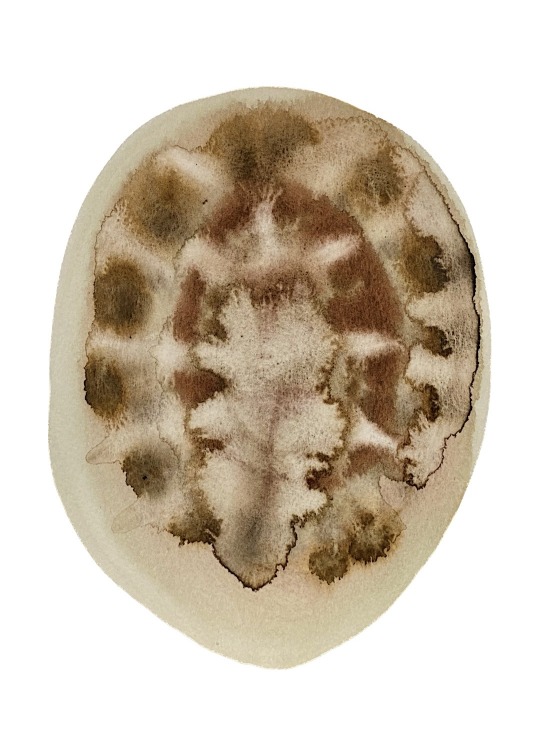
No.81 Slow of The Earth .:. by Earth Artist Rose Eads
website .:|:. @earthjournalbyawildrose
#please reblog angels#nature#artists on tumblr#art#spirituality#abstract art#fine art#bohemian#my art#abstract painting#boho art#portal#fertility#earth#earth art#visionary art#spiritual art#dreamy art#esoteric art#ethereal art#painting#earth energy#Mother Nature#fungi art#space art#modern art#contemporary art#mushroom art#circle art
4 notes
·
View notes
Text
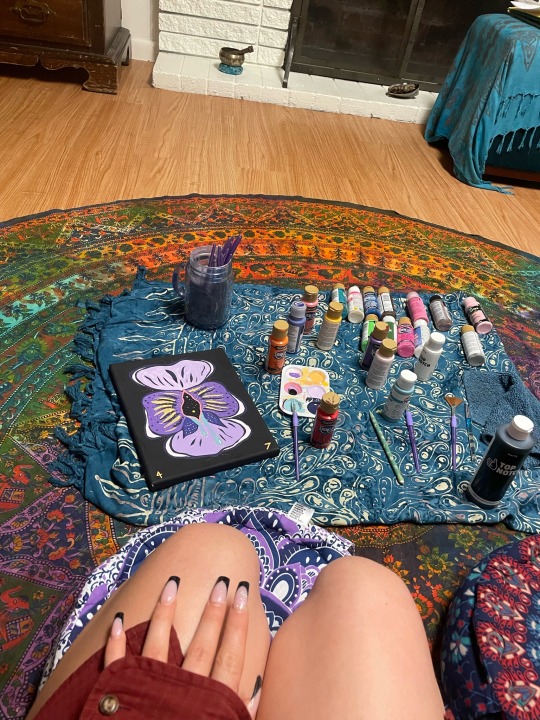
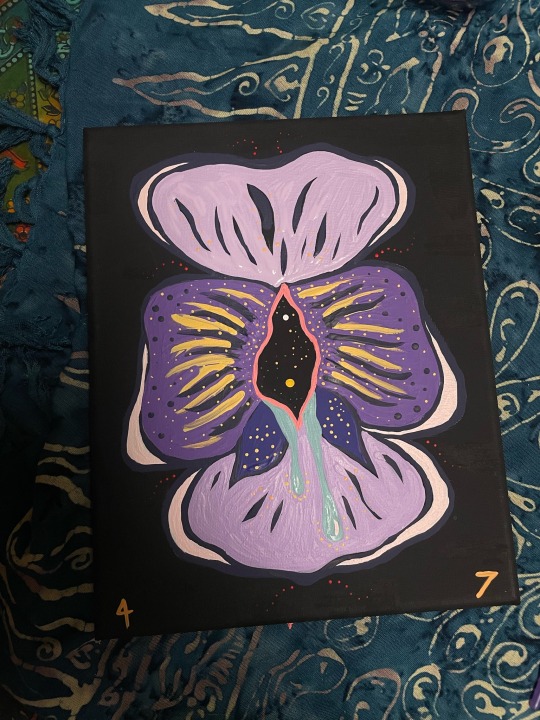
mmhm . 🎨
2 notes
·
View notes
Text

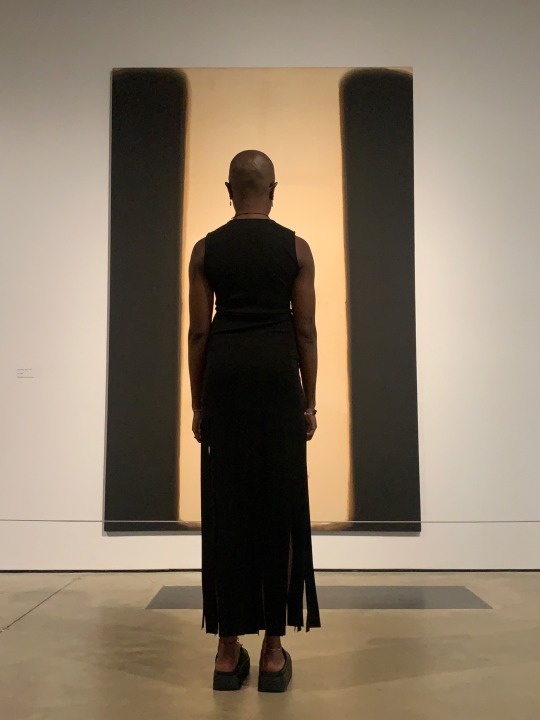
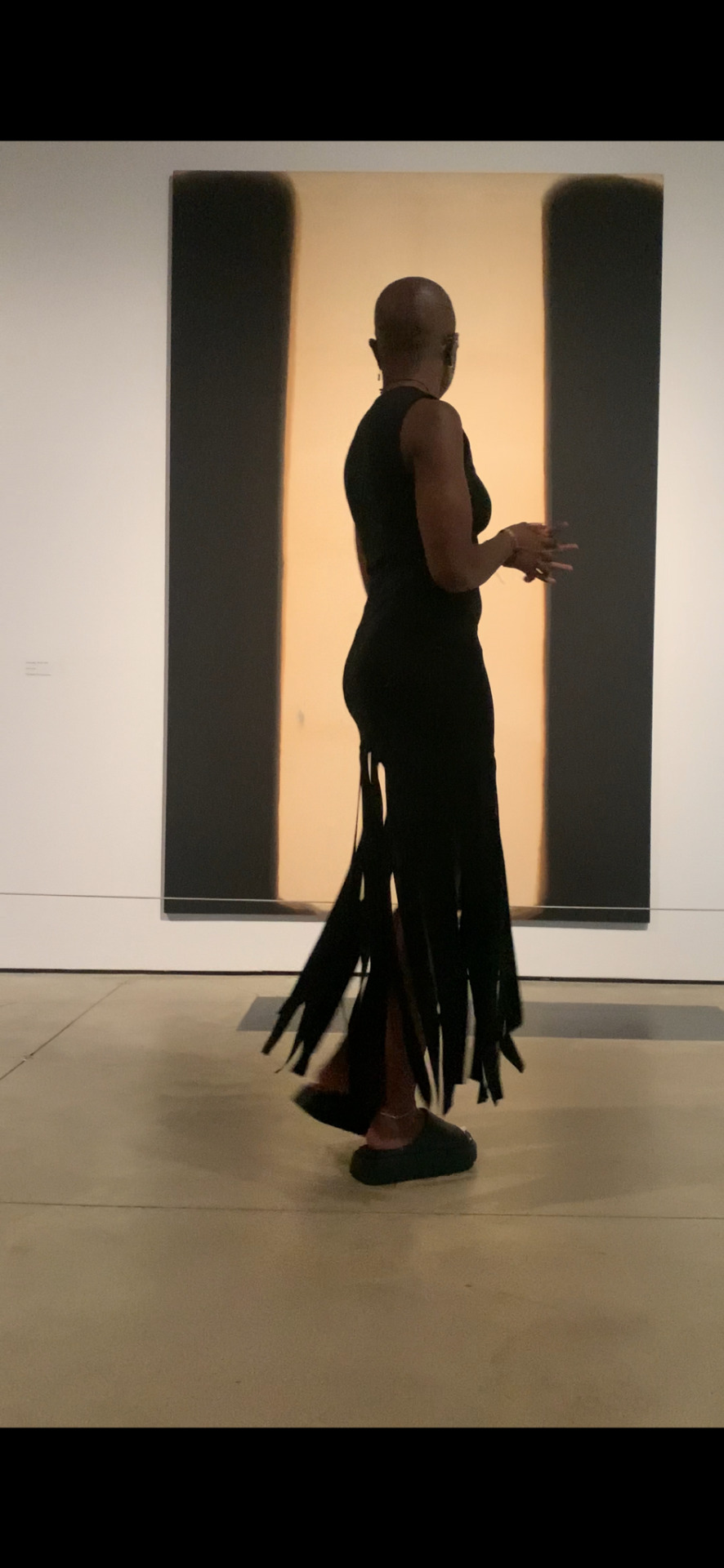



that darkness of yours held a safe space
for you to break free
to dance and swirl around
until you felt comfortable to do so in your light
📖: letter to the bold.
~ ese ~
#poetry#divine feminine#art#healing#feminine energy#black women#yoni art#contemporary art#portal#painting#yun Hyong-Keun#artists#black#stripes#bald women#safe space#balance#yin yang#black dress#black aesthetic
6 notes
·
View notes
Text
Matthew Patel Analysis

I would like to say first off, I am not Indian. I am a Mexican kid who just really likes learning about different cultures. If anything in this is incorrect, offensive, or just overall dumb, I would really like to be corrected and would REALLY like to be able to fix it.
I’ve been trying to decipher what the markings on the demon girl’s and Matthew’s foreheads are. The main assumption would be that they are bindis, but that doesn’t sit entirely right with me when you think about what they represent in Indian culture.
For the demon girls, you COULD say that the markings are bindis, and that they are supposed to represent something “marital”, which would then imply that their binding to Matthew is more complicated, but I personally disagree with this for multiple reasons.
Then of course, for Matthew that would be a bit more complicated. Married women aren’t the only ones who use bindi markings of course as they also can have other uses and meanings, such as representing the third eye. Given Matthew’s powers, this would make sense, but it still doesn’t fully fit correctly in my beautiful mind.
The biggest thing that perplexes me is their colors and shape. They aren’t exactly round--they actually seem to be more elongated, like a very thin teardrop. This made me wonder if they were actually supposed to be tilaks instead, which makes slightly more sense to my big brain. This has to do with two main reasons: 1, both men and women can wear it. 2, Shiva and Shakti.
Let’s start with Shakta.
“Shaktas (worshippers of Devi — the feminine manifestation of the Divine) use kumkum to either draw a single red vertical line, or place a red dot, as a symbol of her divine energy and power.” Source: https://www.hinduamerican.org/blog/5-things-to-know-about-tilak
Shakta is the consort of Shiva, the goddess who is often personified as “Devi”, who acts as the divine feminine to Shiva’s divine masculinity.
“Yoni, (Sanskrit: “abode,” “source,” “womb,” or “vagina”) in Hinduism, the symbol of the goddess Shakti, the feminine generative power and, as a goddess, the consort of Shiva. In Shaivism, the branch of Hinduism devoted to worship of the god Shiva, the yoni is often associated with the lingam, which is Shiva’s symbol. In sculpture and paintings, the lingam is depicted as resting in the yoni as a cylinder in a spouted dish. The two symbols together represent the eternal process of creation and regeneration, the union of the male and female principles, and the totality of all existence. In a myth narrated in several Puranas, the body of Sati, an avatar of Shakti, is dismembered and scattered throughout India. Her yoni falls, and remains, in Assam, regarded as the home of Tantra (esoteric practices).” Source: https://www.britannica.com/topic/yoni
These statements already clear up the shape, color, and meaning behind the girl’s markings. They are the feminine consorts to Matthew Patel and his escapades. Personally I really like this for multiple reasons, the biggest being that it makes their dynamic significantly more wholesome. This article, https://hridaya-yoga.com/blog/yoni-puja/, talks about the yoni tantras and overall adoration and respect for women. While Matthew and his girls don’t interact together much in terms of actual conversation, the general case seems to be that they are protective, uplifting, and devoted to him, while in return we see that they are treated with respect and not once does he ever see them as lesser or treat them as such. (This could be countered with the fact that they do get put in harm's way a lot, but given that they seem to be able to respawn just fine it probably isn’t an issue and something they are willing to do for him anyways.)
With that, let’s talk about Shiva.
“Shiva meaning “The Auspicious One” is one of the three major deities of Hinduism. He is worshiped as the Supreme God within Shaivism, one of the three most influential denominations in contemporary Hinduism and is also called “the Transformer and the Destroyer”.” Source: https://www.templepurohit.com/shiva-worshipped-form-linga-lingam/#google_vignette
Matthew and Shiva have lots of things going on, which personally I find really freaking cool. He literally summons what appears to be the trishul, which is Shiva’s trident. How dope is that??
“The Trishul, also known as the trident, is the primary weapon of Lord Shiva. It is characterized by three sharp blades connected by a long handle. The three blades always point in the upward direction. Shiva is always found to be holding the handle of the Trishul when he is depicted in the saguna linga form. The three blades have various representations in Hindu mythology.” Source: https://servdharm.com/blogs/post/significance-of-shivas-trishul#:~:text=The%20Trishul%2C%20also%20known%20as,in%20the%20saguna%20linga%20form.
When it comes to the actual symbol on his forehead however, that becomes more difficult. I wondered if he was Shaiva (Shaiva meaning “follower of Shiva”), and that was what the symbol meant, but I couldn’t find anything regarding his specifically.
“Shaivites (worshippers of Shiva), for example, smear their foreheads with three horizontal lines of vibhuti, a sacred white ash that acts as a reminder of the temporary nature of the material world. Made of the burnt dried wood from Hindu fire rituals, the three lines of vibhuti are called tripundra, and represent Shiva’s threefold powers of will, knowledge, and action. Tripudra is also frequently worn with a dot made of kumkum (a powdered red turmeric) in the center, symbolizing the creative and energetic force of the Divine known as the Goddess Shakti.” Source: https://www.hinduamerican.org/blog/5-things-to-know-about-tilak
Interestingly enough, the tripundra does share the teardrop shape that Matthew has. What confuddles me is the lack of the three lines, and the color. I am unsure as to whether or not this has meaning, was on purpose, or was just what they decided to go with.
I did however come to the conclusion that the color might be related to bhasma (calcine ash), more specifically, “Pushpa Kasisa, which is crystalline with bluish green color.” Source: https://www.ncbi.nlm.nih.gov/pmc/articles/PMC3530270/
“Bhasma is a Sanskrit word that means “bone ash,” “cinder” or “disintegration.” It comes from the root bha, meaning “delusion,” “appearance” or “likeness,” and sma, meaning “ever” or “always.” In Hinduism and yoga, bhasma is sacred ash. In some traditions, it is thought to contain the energy of Shiva.”
“In the spiritual context, bhasma symbolizes burning the ego to ashes in order to unite with the higher Self or the divine. It represents liberation from the limitations of mortal life and freedom from the cycle of reincarnation. It is also a reminder of the temporary nature of the physical body, which will one day return to ashes.
Also called vibhooti, bhasma is the sacred ash from the fire of a yogi or saint or from the sacrificial fire known as yajna in which special wood, herbs, grains, ghee and other items are offered as part of a worship ritual. Bhasma is thought to destroy sin and consume evil.” Source: https://www.yogapedia.com/definition/5934/bhasma#:~:text=In%20the%20spiritual%20context%2C%20bhasma,from%20the%20cycle%20of%20reincarnation.
Overall it appears that bhasma is applied to protect its wearer from physical harm/illness as well as serving its spiritual purposes which works really well given that it appeared during a fight where Matthew was in fact, getting harmed.
(I do want to mention though that I do think that it is not actual bhasma as that really wouldn’t make sense, but the similarities and “coincidences” are really cool to me.)
Okay, how does this relate to Matthew’s powers?
“According to yogic texts, there exist seven major chakras (discs of subtle concentrated energy) that run along the center of the body, each of which relate to some aspect of a person’s physical, emotional, and psychological make-up. Tilak is placed on the forehead between the eyebrows where the ajna chakra is located. As ajna means to “perceive” or “command,” the ajna chakra is considered to be the “eye of intuition,” through which a person can discern information that cannot otherwise be seen with one’s physical eyes. This “third eye” is a spiritually potent part of one’s being that helps one to focus inward on the Divine. Tilak, therefore, is placed on the ajna chakra to invoke this divine energy, as well as act as a reminder of the ultimate life goal.” Source: https://www.hinduamerican.org/blog/5-things-to-know-about-tilak
If Matthew is invoking the power of Shiva to aid him through the third eye, or the ajna chakra, this would make the most sense (and would explain why we hadn’t seen it before, probably). I also think it explains his fireballs pretty well, as I’ve noticed a lot of fire and burning practices and metaphors throughout my search for answers.
Oh, also, this: “Shiva's tapas generated so much heat that his body transformed into a pillar of fire - a blazing lingam that threatened to destroy the whole world. The gods did not know how to control Shiva's fire.”
In fact, the whole summary article thingy is really cool to me, so i’ll put it all here.
“Shiva saw no sense in the transitory pleasures of life, so he rejected samsara, smeared his body with ash, closed his eyes and performed austerities.
Shiva's tapas generated so much heat that his body transformed into a pillar of fire - a blazing lingam that threatened to destroy the whole world. The gods did not know how to control Shiva's fire.
Suddenly there appeared a yoni - the divine vessel of the mother-goddess. It caught the fiery lingam and contained its heat, thus saving the cosmos from untimely destruction.
Shiva is often pictured in a pacific mood with his consort Parvati, as the cosmic dancer Nataraja, as a naked ascetic, as a mendicant beggar, as a yogi Dhakshinamurthy, and as the androgynous union of Shiva and Parvati in one body (Ardhanarisvara).
Shiva also takes the form of Ardhanari, his androgynous form. The right side of the sculpture is Shiva and the left side is Parvati. The attributes of each are split directly down the middle.
Another example of Shiva's apparent synthesis of male and female attributes is seen in his earrings. He often wears one earring in the style of a man and the other as a female.” Source: https://www.lotussculpture.com/shiva-hindu-god-lord-destruction-meaning-symbolism.html#:~:text=Shiva's%20tapas%20generated%20so%20much,how%20to%20control%20Shiva's%20fire.
So yeah, there you have it. Here is every single source I used:
Shiva
https://servdharm.com/blogs/post/significance-of-shivas-trishul#:~:text=The%20Trishul%2C%20also%20known%20as,in%20the%20saguna%20linga%20form.
https://www.lotussculpture.com/shiva-hindu-god-lord-destruction-meaning-symbolism.html#:~:text=Shiva's%20tapas%20generated%20so%20much,how%20to%20control%20Shiva's%20fire.
https://en.wikipedia.org/wiki/Shiva
https://en.wikipedia.org/wiki/Trishula
https://www.templepurohit.com/shiva-worshipped-form-linga-lingam/#google_vignette
Shakti/Yoni
https://www.britannica.com/topic/yoni
https://hridaya-yoga.com/blog/yoni-puja/
https://kripalu.org/resources/shakti-power-within-you#:~:text=Shakti%20means%20power%2C%20energy%2C%20or,the%20divine%20masculine%20god%20Shiva.
Tilak
https://www.linkedin.com/pulse/tilak-ancient-practice-significance-neeta-singhal
https://www.hinduamerican.org/blog/5-things-to-know-about-tilak
https://www.britannica.com/topic/tilak
https://en.wikipedia.org/wiki/Tilaka
Bindi
https://exametc.com/magazine/details.php?id=900
https://www.sanskritimagazine.com/bindi-meaning-and-significance-of-the-dot-on-forehead/
https://en.wikipedia.org/wiki/Bindi_(decoration)
Bhasma
https://www.yogapedia.com/definition/5934/bhasma#:~:text=In%20the%20spiritual%20context%2C%20bhasma,from%20the%20cycle%20of%20reincarnation.
https://pubmed.ncbi.nlm.nih.gov/24696811/#:~:text=There%20are%20various%20importance%20of,heavy%20metals%20in%20the%20body.
https://www.ncbi.nlm.nih.gov/pmc/articles/PMC3530270/
Third Eye
https://en.wikipedia.org/wiki/Third_eye
#matthew patel#scott pilgrim takes off#scott pilgrim takes off spoilers#spto spoilers#spto#onion's thoughts
152 notes
·
View notes
Text
Guessing BTS Rising Signs
hello besties. I made this post a long time ago and since then, we've had TWO Bts members reveal their birth times so I thought it would be interesting to look at the rest of the members in this context. Here's my old post if you're curious.
I'll mention the members with confirmed birth times so that we can get that out of the way:
Jungkook- Mula Rising
His birth time was confirmed to be 3:23 PM which makes him a Mula Rising and tbh I've always seen him as hella Ketuvian (he also has Magha Moon) and this just fits. Mula's dog yoni does give him that puppyish charm, kind of androgynous style and a very endearing, silly personality. Plus like I mentioned in my post about Nodal people and how child stars often have Nodal placements + often tend to be heavily tattooed/pierced, Jungkook joined Bighit when he was 13yrs old and made his debut at 15yrs and has a tattoo sleeve and hella piercings<33
He is Purvaphalguni Sun, Magha Moon & Mula Rising
Jimin- Pushya Rising
His birth time is confirmed to be 11:58pm. Although he did not specify AM or PM, he did say he was born around "dawn" and im assuming that means the dawn of a new day because 11:58 am is most definitely not the dawn of anything. I've always suspected that he had Cancer Rising because of his appearance, full lips, round cheeks and all that 🥺and also just how sweet and soft his demeanor is 🫶🏼
He is Chitra Sun, Rohini Moon & Pushya Rising
Now here are my speculations for the other members:
Jin- Shravana Rising/Purvashada Rising

purely based on his appearance i believe he has Moon influence because he's Jyeshta Sun & UBP Moon and i dont really see much of either (Jyeshta's rabbit yoni does come thru a little bit but I feel like his appearance is majorly influenced by something else??) He could also be Purvashada Rising and him being Venusian also makes sense to me but his no nonsense attitude, refusal to submit to anyone, how he acts as though he's better than others (most of the time, its just a joke and he is funny ngl) all comes down to Moon influence for me tbh and I def don't think he's Rohini or Hasta, his energy is harsher and more direct which makes me think Shravana

Yoongi- Ashlesha Rising
i def think he has a cat yoni (he is PBP Sun which gives him lion yoni/feline influence but there has to be more to it than just that) i used to see him as Punarvasu but now I lean more towards Ashlesha tbh, he does seem to have a rakshasa gana nak in his big 3, he's very discriminate about who he gives his time and energy to and that's very sidereal cancer of him. also im convinced that him and Namjoon have outcaste naks in their rising because of the kind of journey they've had from the underground rap scene to the biggest band in the world

Hobi- Ashwini/Bharani Rising
i think Hobi is an Aries Rising, like there's nooo way he does not have Aries influence (i know he's Krittika Moon) i think Bharani because its also an outcaste nak and BTS faced a lot of discrimination in so many different ways

Namjoon- Vishaka Rising
i used to be torn between swati and vishaka but now im pretty convinced he's Vishaka Rising lol, first of all he has Jupiter influence, just trust me on that

this is the cover of his first mixtape and he said his face is painted half-black because he feels that he's "half positive and half negative". if you've read anything ive written about Jupiter or watched Claire's vids on Jupiter you know that duality is a major Jupiter theme specifically the battle between good and evil. namjoon's lyricism also oscillates between opposites a lot. in seoul he sings about how "love and hate sound just the same to me" and all of these are extensions of his Jupiter influence. i know he has Venus & Jupiter in Swati but i dont think he has a Swati stellium because he's too balanced to have that much Rahu influence lol and even though he talks about struggling to maintain balance i think that's the Jupiter in him coming thruuu, Vishaka is also an outcaste nak and Namjoon has been the scapegoat for all kinds of hate for his whole career

Taehyung- Rohini Rising
i think he has a serpent yoni ngl and if he's Rohini rising then it will be conjunct Jimin's moon which makes sense tbh and he also seems Moon influenced because of how emotional he is.
A major reason why I've assigned Outcaste naks to majority of the members is because of how they were the outcasts/underdogs in the industry for so long and if the shoe fits...yk I dont think those themes would manifest for them as a collective if the majority of them did not have those placements
76 notes
·
View notes
Text
Vedic Astro Notes
(check your sidereal chart)

🤎The fiery orb of Mars was allotted to Kamadeva who is the God of Love and the lustrous orb of Venus was allotted to the Great Warrior Ushana.
🤎Lunar people (sidereal cancers) should wear more yellow, keep sunflowers, even paintings of sun during the winter months. It will help in motivation, make you feel alive.
Lunar people tend to be more active during summers. Their personality comes out and literally glow!!🔆🌕 https://t.co/rhUT2y78kn
🤎12H ruler in retrograde can bring disturbances in sleep pattern.
🤎You may tend to get sick during when eclipses are transiting on your ascendant/rising sign.
🤎The house where retrograde planet resides is where you overdo things.
🤎Sidereal Leos ( Magha and Purva Phalguni) love cheese 🧀 (rat yonis lol)
🤎Your Karakamsha Lagna show your talents
Lisa Manobal in my opinion is an Ardra Rising (sidereal gemini). Her big eyes and also her jovial, cuddly nature (Ardra being a dog yoni) just speaks so much Ardra. Her lyrics are so Ardra mood too!!

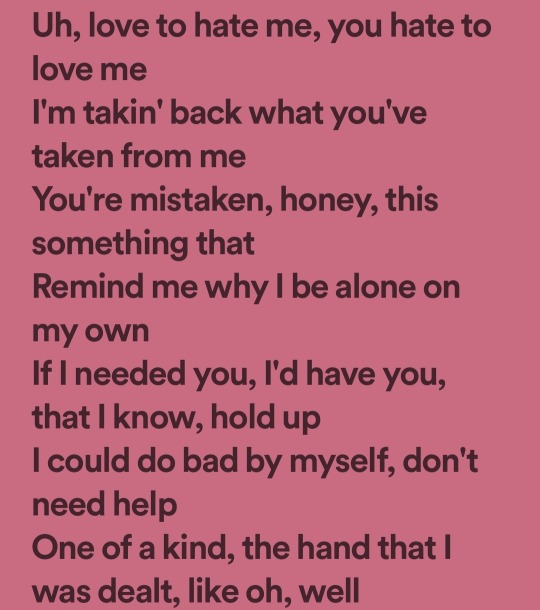
🌙Birth Nakshatras of the grahas-
Sun - Vishakha
Moon - Kritika
Mercury - Purva Bhadrapada
Venus - Magha
Jupiter - Purva Phalguni
Saturn - Revati
Rahu - Bharani
Ketu - Ashlesha
*keep in mind that these birth nakshatras are not the actual rulers*
🤎Bhrigu Bindu is the destiny point in our charts. It's where we have a fulfil a lot of our Karmas.
🤎Shravana people tend to be really highly educated!! Love learning and are very intelligent!! They are very underestimated and made of fun of, being thought of as dumb:
🤎Venusians and Rahuvians are the ones who are likely to have rose tinted glasses on their eyes. Even if they are smart to see the facts, but not always accept them for what they are. They still want things to improve and be that version that they believe ot imagined.
🤎Sidereal Pisces Moons love children!!
#vedic astrology notes#vedic astrology observations#vedic culture#vedic notes#vedic astrology#vedic astro notes#vedic astro observations#astrology community#astrology notes#astro notes#astrology#astro community#astro observations#astroblr#astrology observations#astrology placements#astrology blog
320 notes
·
View notes
Text
☋☋ ☋ मघा Magha Nakshatra मघा ☋ ☋☋
Past lives, ominous, traveling inward

Hughes Merle's Mary Magdalene in the Cave, 1868. The reptilian arms are not part of the original painting.
The Basics
Ruling planet: Ketu
Ruling deity: Pitris
Yoni: Male rat
Symbol: Royal throne
Rahu and Ketu
We can't talk about Ketu without talking about Rahu as well. Rahu and Ketu are referred to as the lunar nodes in astrology. They aren't physical objects in space like Jupiter or Saturn. They are calculated points. However, for ease of communication, Rahu and Ketu are often referred to as planets anyways.
The lunar nodes are determined by the orbits of the sun and the moon. The intersections of the orbits of the sun and moon as apparent from Earth tell us the position of the nodes at a given time. It takes about 18 months for the nodes to journey through a single zodiac sign and about two decades for them to cycle through all twelve.

Image from Wikipedia.
Since the nodes are located where the sun and moon overlap as seen from Earth, they are associated with eclipses. Rahu (the north, or ascending node) swallows the sun during a solar eclipse and Ketu (the south, or descending node) swallows the moon during a lunar eclipse. We can further assume that the nodes are always exactly 180° apart, or opposite to, one another. If the north node is in Sagittarius, for example, the south node will always be in Gemini.
The nodes in astrology deal with karmic destiny. The nature of your south node placement shows who you were in a past life, what you have previously mastered and now know in your bones to be true. Your north node placement shows what you are working towards in this life, what you strive to accomplish, the lessons you are here to master.
Rahu and Ketu In Mythology
According to Vedic mythology, Rahu and Ketu started out as one being, a demonic serpent called a rakshasa. They were separated into two beings as punishment. During a ceremony to honor the planets, Lord Visnu churned up the oceans to create a divine nectar for them to drink and become immortal. When the planets (or deities) lined up to drink, the demon snuck under Visnu's nose to drink some of the nectar for himself. Rahu/Ketu had already ingested the immortal drink before they were caught in the act - becoming accidentally undying. Furious, Visnu beheaded the demon but at that point it was too late. Rahu (the demon's head) and Ketu (the body) become two entities and were cast to opposite ends of the sky.
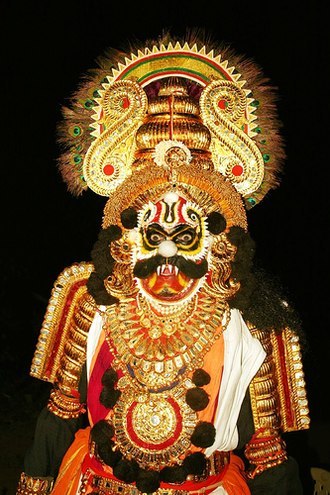
A depiction of a rakshasa (demon) done in Yakshagana, a traditional style of theater prominent in southern India. Image from Wikipedia.
Rahu, being the head, is arguably more responsible for the separation of the demon into two parts. As the head, Rahu is consumptive by nature. This is why one's natal Rahu placement indicates what they are after in this life. The devouring head symbolizes our insatiable desire to obtain more and become more.
Rahu's willingness to ignore boundaries to obtain the immortal nectar is telling - he has no regard for authority. He is not much of a leader himself, more so interested in mocking those holding positions of power. In this way Rahu is hypocritical because he attacks the character and methodologies of those in power yet he himself demonstrates childishness and irreverence. When he is rendered a head without a body, he is left an eternal troublemaker.
When separated from his head, bodily Ketu is doomed to forever long for his other half - reminiscent of the past being the past, something we can never go back to and simultaneously can't shake the memory of. We master our Rahu and Ketu by connecting our heads with our bodies - that is, by balancing past with future, applying ancient knowledge stored in the body to achieve future-facing objectives the head seeks to fulfill.
"Ketu's permanent longing for wholeness is a consequence of Rahu's excited refusal to respect conventional boundaries. As a result of Rahu's wildness, Ketu the Dragon-Tail Cauda Draconis is forced to gaze with eternally unsatisfied longing at His dear severed partner Rahu the Dragon-Head Caput Draconis." - Barbara Pijan Lama, Vedic astrologer based in Portland, Oregon
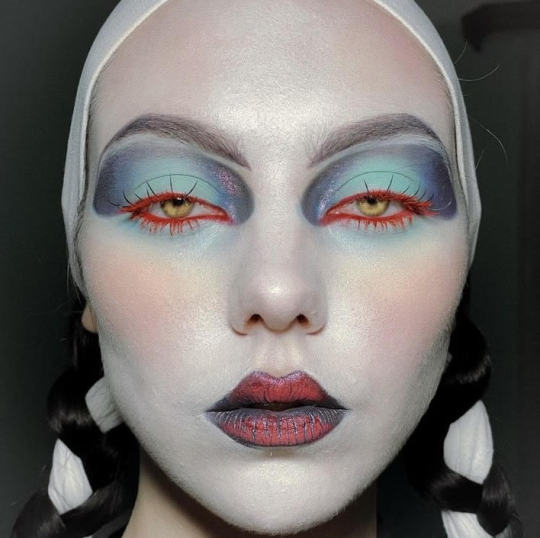
A makeup look done by smeyuka on Instagram. Note the grey/smokey tone of the face and red emphasis added to the eyes.
In Phaladeepika, a classical Sanskrit text on Vedic astrology, Ketu is described like this:
"Ketu is fiercly red-eyed, is venom-tongued (speaking venomously), and without a body or disembodied, he is violent (using weapons, wants to scare), and ignoble (low, fallen, no social contribution, uncultured, wild, intense), his complexion is smokey (ominous), he is a constant smoke drinker (using opium or marijuana), his body is covered in scars (not cooperative), not fatty (emaciated, thin, angular), and cruel (unforgiving)."**
** what is in paranthases are notes on different ways the text can be translated. Watch Vic Dicara's videos on Rahu and Ketu.
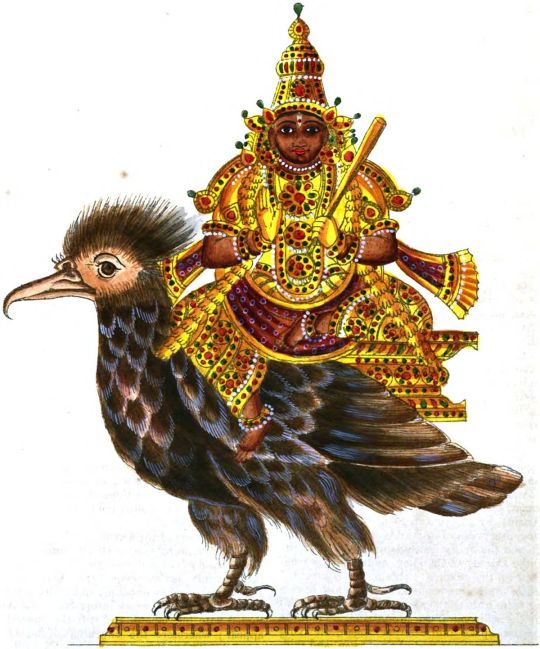
Artistic rendition of Ketu/Kathoo in E.A. Rodrigues's The Complete Hindoo Pantheon. Image taken from Wikipedia.
Some people think that what we experience as eclipses are actually Rahu and Ketu taking revenge for their separation. Eclipses are times of sudden change - when the sun is obscured by the moon or vice versa, the atmosphere on Earth is very different. Having witnessed the total lunar eclipse of 2017, I remember things turning a grey/yellow/brown hue, and the air taking on a kind of hazy quality (but I believe this was due to wildfires). If you have ever seen the movie Enemy with Jake Gyllenhaal, it looked like that.

Still from Enemy (2013)
Here is a description of a solar eclipse by Dr. Rick Feinberg, astronomer and science communicator (now retired):
"Measurements made at recent total eclipses put the illuminance at totality around 5 lux, comparable to civil twilight. The sky is still some shade of silvery, purply blue. In contrast, the black sky on a night of full Moon is 10 times darker still, less than 0.5 lux. Yes, bright planets –– especially Venus and Jupiter –– are obvious in twilight, but stars? I don’t like to waste valuable time during totality looking for stars; the only time I saw one was on August 21, 2017, when 1st-magnitude Regulus glimmered just to the left of the totally eclipsed Sun.
It certainly feels like it gets as dark as night during the final minute before totality, but that’s just because your eyes haven’t had time to adjust. The changes in illumination at the beginning and end of totality happen much faster and more dramatically than at dusk and dawn, respectively."

Image of the 2019 solar eclipse above the European Southern Observatory in Chile, taken by Mahdi Zamani.
Non-dualism and the Ouroboros
The nodes are inseparable opposites, both two and one - like how the past and future becoming one in the present. In this way they demonstrate the concept of non-duality. Non-dualism is a philosophical concept observed in many spiritual and religious traditions, particularly ones that originated in the East such as Buddhism, Hinduism, and Taoism. The non-dual perspective holds that there is no fundamental separation - between objects, energy, people... it's all one.
“All things are permeated with God, just as all things are permeated with air.” – Hildegard of Bingen
Ketu's rulership over Magha suggests that people with heavy influence from this nakshatra in their birthchart are deeply spiritual and/or philosophical. If you think about Rahu and Ketu as being an axis - that is, talking about the same topics but having opposite opinions on them - Rahu expands outwards, forever seeking to consume and grow materially. Ketu expands internally. The expansion of Ketu looks like material poverty from the outside, but Ketu is not interested in earthly objectives. Rahu wants to grasp and Ketu wants to release. By releasing attachment to the physical, Ketu finds bliss.
Rahu's knowing is of the head. It is entirely cerebral. Ketu's knowing is bodily. That is, it is completely intuitive and feeling/sensory-based. In the world we live in, computational and logical thinking is (for better or worse) king. For this reason, if you have prominent Magha placements, I wouldn't be surprised if you feel like you either 1) don't belong in this world or 2) have been here before, perhaps many times over. Ketu, symbolizing past lives and knowledge gained from them, wanders the earth, aimless, forever drifting. He finds nothing on earth to be of substance.
While Ketu-heavy or Magha-heavy people can possess deep inner knowing that endows them with a certain type of respect, this same trait can be the source of an overly apathetic attitude when taken to an extreme. Detachment is all well and good, but unless you're truly the type to pursue a monastic or nomadic path, it's necessary to keep your feet on the ground at least a little bit to live in a well-rounded way. Ketu people are faced with a challenge to ground their intuitive knowledge and bring what they find on their travels inward out to the world around them.
One symbol that is steeped in unity and oneness is the ouroboros. Depicting a serpent or dragon devouring it's own tail, the ouroboros has appeared in ancient Egypt, Mexico, India, as well as Hermetic and Alchemical texts. The serpent chases its continually regenerating tail in an eternal circle, just as Rahu and Ketu are condemned to chase one another from opposite ends of the sky forever.

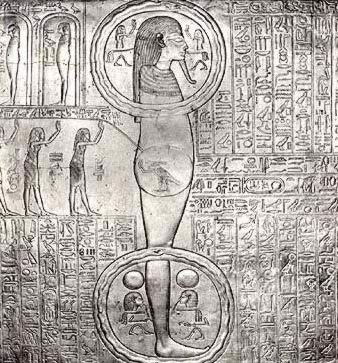
Two ouroboros symbols shown encircling a figure in An Enigmatic Book of the Underworld, funerary text and shrine discovered in King Tutankhamun's tomb. The figure has been speculated to be the mummified form of King Tut himself, while some think it is the unification of Ra and Osiris.
An Enigmatic Book of the Underworld is regarded as the place of the first appearance of the ouroboros, dating it to at least 14th century BCE. It is thought that the book illustrates the replenishing of the solar disc - the ancient Egyptians believed that the sun would use up all of it's heat and energy during the day and had to 'recharge' at night. At night, the Sun was said to pass through the same region of death where the gods were believed to reside. Their souls would follow the Sun as he cycled above and below the horizon while their bodies remained in the underworld. Time was seen as cyclical repetitions rather than a linear unfolding. The ancient Egyptian's understanding of time was based on their observations of recurring natural events like the Sun's daily journey across the sky and the annual flooding of the Nile.

An illustration of the ouroboros in an alchemical text from around 400AD.
The Alchemists believed that all physical materials on Earth originated from the same original source material and could be differentiated by their varying levels of purity. Gold was held as the most pure and 'perfect' form of matter, which is why the Alchemists sought to create it using lower quality metals such as lead - a process called chrysopoeia. The desire to create gold from crude materials that is central to Alchemy is largely metaphorical. The broader goal of the Alchemists was to evolve the human soul through deepening the understanding of one's self. The ultimate objective of alchemy was to transform personally into someone 'greater' than you were before. More knowledgeable, powerful, physically healthy or beautiful...
The Pitris
The deities ruling Magha are the Pitris, spirits of the paternal ancestors of humanity - the word 'pitris' is Sanskrit for "fathers."
The word Magha can mean gift or it can mean power. As it relates to Magha nakshatra, it means gifted power - that is, inherited power. Each nakshatra has it's own associated sutra, which are kind of like condensed teachings. The translated sutra for Magha is "The forefather's gift of power needs demoralization, to ruin."
Vic Dicara explains the lesson of Magha nakshatra as illustrated in it's sutra - how to be victorious without getting wounded. The sutra for Magha is saying that the way to defeat your enemies is to prevent the battle from happening in the first place. And how do you do that? By bullying them, basically. Magha natives have the power of the forefathers (Pitris) behind them, which they brandish and threaten their potential opponents with. Before a single punch has been thrown Magha puffs out his chest, letting his opponent know that he has friends on the other side backing him up - think Dr. Facilier from the Princess and the Frog.
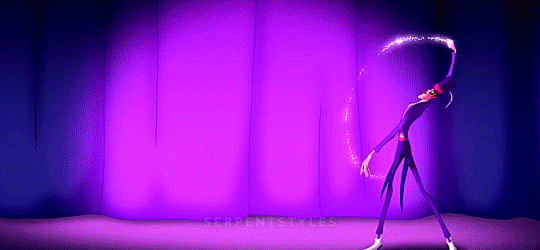
Magha's Yoni: the Male Rat
The word "yoni" in Sanskrit refers to the vagina. The word can be used to refer literally to female genitalia, but it also has a deeper meaning relating to source material - the empty 'womb' out of which the universe materialized.
Each nakshatra has a corresponding yoni assigned to it. The yonis of the nakshatras describe their primal and sexual nature - how they behave when backed into a corner and the different ways they behave in the bedroom. In the vedic astrological system, the yonis are depicted as different types of animals - appropriate, considering the aspects of the human personality they attempt to describe and categorize.
Magha's yoni animal is a rat. Rats are inquisitive, playful and sociable by nature. They are intelligent and, as pets, trainable. They are hygienic, keeping themselves clean by grooming their tails, fur, and faces. They also do everything quickly - I've never seen a rat move in a leisurely way.
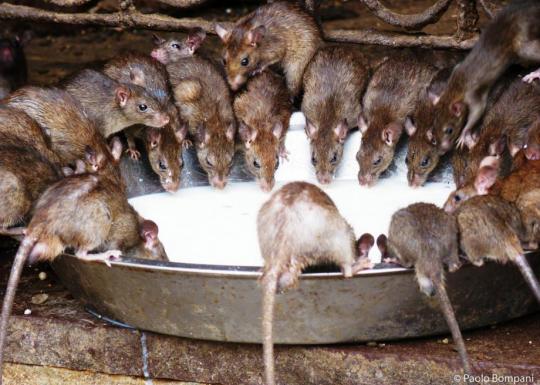
Rats are venerated at the Karni Mata temple in Deshnoke, India. Large saucers of milk are left out to keep them fed. The temple is a monument honoring the coexistence of life in every form - which is why rats are treated reverence here rather than seen as pests. Image by Paolo Bampani.
The rat signifying the primal nature of this nakshatra suggests a few things. We can easily surmise that Magha people are curious, likely quick-witted due to an above-average intelligence, and energetic. We can also guess that Magha people are adaptable - think about the poor conditions rats are able to survive in. An additional quality of rats which I think relates to Magha is their use of their whiskers to both balance themselves and maneuver around objects in their environment - they don't have the best eyesight and rely heavily on the sensitivity of their wire-y mustaches. This hearkens to Magha's bodily, ketuvian intelligence.
At first, the personality of the light-footed and friendly rat seems to clash with the ancient wisdom Magha has. When I think of someone in touch with their forefathers and past lives, I think of someone who moves slowly (literally and metaphorically), approaching and completing all tasks with patience, precision, and caution. The good-natured and hyperactive qualities of the rat combined with Magha's connection to protective (paternal) ancestors, dispersing and wandering ways of Ketu, and transforming power of the eclipse paints a particular personality profile. This is a person who has their head in the clouds and could rip you to shreds - if you provoke them first.
The Symbol of the Royal Throne
Magha is considered to be an auspicious nakshatra - that is, it brings positive things to whatever planet is placed here. The rulership of the Pitris over Magha cements their innate power. It is one thing to be a powerful person because of the things you have accomplished, but when someone is powerful because of their ancestors has royalty in their blood. It can never, ever be taken from them because it is simply who they are.
Magha spans 0°00' to 13°20' Leo. Leo is the most regal and royal of all twelve zodiac signs. The most common gripe people have with Leo's is their pride and self-centered attitude. The thing is is that Leo is ruled by the Sun - the literal center of our solar system. Resenting a Leo for shining is like disliking the Sun for burning. Of course, egotism has the potential to run rampant if a Leo person has not matured very much, which is the shadow side of this sign. Oftentimes, though, you will find that the warm, glowing self-sureness of Leo's triggers the insecurities in those around them, causing them to lash out.
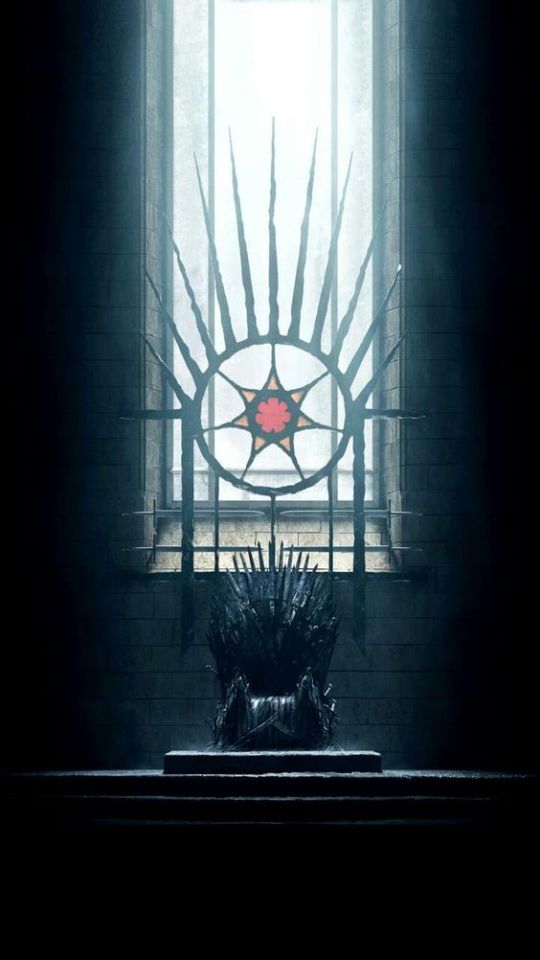
The Iron Throne from Game of Thrones.
The symbolism of the throne for Magha should come as no surprise. Those who sit and have sat in thrones throughout history were usually born into that role as opposed to being appointed - bringing us back to the ancestral power brought on by Magha's connection to the Pitris.
Song for Magha: You Don't Mess Around with Jim by Jim Croce
And they say...
You don't tug on Superman's cape
You don't spit into the wind
You don't pull the mask off that old Lone Ranger
And you don't mess around with Jim
This song talks about a local legend who's reputation precedes him. It is known so well that you don't cross him that doing so would be as obviously foolish as spitting into the wind. While Jim, the menacing figure the song centers around, is described as being big and dumb - traits that aren't as applicable to Magha - his reputation as someone you don't want to mess with fits perfectly with the power of this nakshatra. Jim, just like Magha, has won the fight before it started because you're probably too intimidated to approach him in the first place. Maybe Jim had the Pitris backing him up, too.
-------
Check out Vic Dicara and Claire Nakti on YouTube - both influential figures in the vedic astrological community.
11 notes
·
View notes
Text

Vivian Greven (German, b. 1985) - X XVI, 2023, Paintings: Oil on Canvas
396 notes
·
View notes
Text
Jihyo Chart Reading
Jihyo vedic birth chart is so easy to read because everything Onces know about her translates so obviously in her chart.
Libra Ascendant; lord in 4th house
Indicates Jihyo life focus is on her deepest inspired self or her private life. The 4th house represents emotions, privacy, lowest point, imagination and inspiration, and lineage or other aspects of us we were "born into" (nationality, culture, etc)
1st house is our energy and physical body. The "front gate" of our birth chart. Having it focus in the deepness of the 4th house can indicate a weak ability to preserve self against people, life dilemas or just any obstacles that prevents a person for living life (stress, closed-mindedness, skills, wealth, etc) but because the 4th house is good for grounding it's something that can get better with age
Capricorn Sun in 4th
Sun is weak in the 4th and Capricorn is one of the signs Sun feels weak in (because Sun and Saturn are natural enemies) so this means there is issues with confidence, happiness, and insight
Capricorn in 4th can indicate feeling restricted or overpowered in private life. On the reverse having Sun her can indicate an ability to gain power from restricting self or hard-work
Capricorn Sun is typically a placement that gets better with age because Jihyo's conscious may be very focused on restrictions and limits put on her by society or people with authority over her but may have learned to use restrictions as starting blocks or guidelines for greatness and power
Sun rules 11th house
Jihyo soul in this lifetime is focused on worldly success and fame. Sun is how we intrinsically desire to be (its our soul) and how we aim for honor in our lives by living up to our own standards and heart's desire. So Sun here can indicate a person getting honor and confidence from connecting with or seving society in a big way. Humanitarian vibes or society's muse
Sun being in the 4th and ruling the 11th creates a natural relationship that acts like a conjunction between Jihyo's private life, family or mother to her . Usually indicates gaining wealth or favors from family, lineage, or imagination. Can also indicate private life being very restricted or structured by society or fame
Libra Moon in 1st house
A lot of artists have Libra Moon (or sun) because there is comfort in creating beauty having Libra Moon in 1st house means jihyo focuses a lot on what she finds pleasing and giving art to share with others. Libra is also about justice and balance so Libra Moon. Which for a lot of celebrities shows up as being activists or another senario is always striving for greatness to balance out recieving great success
Moon rules 10th house
Moon ruling the 10th house means there is an emotional need to project life in the highest way to make a impact on the world. Or could mean there is a natural skill in expressing self in the public.
Moon being in the 1st and ruling the 10th creates a natural relationship between the two houses that acts as a conjunction between Jihyo's life direction, physical body, and persona and her career, public image & honor, services and contributions to society.
Usually indicates a natural inclination to "making it big"

Chitra Ascendant (Star of Oppurtunity)
Ruled by Mars (aggression, courage, and energy)
Jihyo directs her life towards being creative in a very meticulous way. Feels inspiration (because Chitra is "demonic/body/desires" focused) but wants to master a physical manifestation of beauty (because chitra is guided by Tvasthar: architect of the universe). On top of that Chitra symbol is a beautiful painting or pearl (two beautiful things that takes time to create)
Chitra people are also said to have sudden crude moments where they will trigger or anger others through their insensitivity (I think also having the tiger as the yoni animal of Chitra indicates a sort of aggressive or intimidating nature) speaking of having tiger as yoni animal may indicates a majestic sexual appeal
(Nakshatra Lord) Mars in 12th conjunct Rahu
Gains and projects energy into fantasies, creativity and/or spirituality. Rahu influence here may indicate a materialistic obsession with these things and an intense desire to make these things a tangible thing in their life or to be complete immersed in these things
Shravana Sun (Star of Learning)
Jihyo soul aligns with the "star of learning" quite a few other celebrities have shravana on their Sun or Moon because it's ruled by Moon (emotions, devotion, and inspiration) but also resides in Capricorn giving a influence of Saturn(restriction, building stregnth, & lessons) This indicates learning to cater to the masses and Shravana symbol being "the ear" can, to some extent, mean being formed or greatly influenced by authorities of society or your culture (the deity wish of shravana is "may i stay in good favor of the public and not have any shame)
the combination of Moon and Saturn can also mean jihyo has a big influence on the masses because anything Saturn touches creates strgnth and power with time and discipline so jihyo can be seen as very powerful and event authoritarian herself
Moon in 1st
Moon is better understood as "your existence on earth" which is similar to how it is seen in western astrology but in vedic astrology there is an understanding of how much the moon actually represents a person's personality as it is the entire spectrum of a person's ability to experience emotions. Moon is often called the "emotional mind" because it's understood how you can emotionally experience the world turns into how your entire being is formed.
Moon in 1st or Moon conjunct Ascendant can indicate having your true deepest self align with your life direction. It can also mean jihyo feels a little unrest because the moon (which is passive and needs calm energy) is in the active and exposed part of her chart
Moon on 1st house gives a charming apperance
Swati Moon (Star of Independence)
Jihyo's deepest self and main being is focused a lot on freedom and adaptability.
Swati being ruled by the Wind God (Vayu) it shows up typically for swati peoplr that at a young age they could of felt very easily swayed or pushed around by the world around them (almost being as light as leaf having no power or stability) (which comes from Swati being ruled by Rahu the part of us that is susceptible to influence of society or pop culture)
The deity goal of Swati is "May I move freely in all the universes" which indicates an ability to master any environment or situation. This may come from Swati being in Libra there is an influence of Venus giving a feeling of pleasure from the influence of the world around them. Swati people get use to this "easily moved" aspect of themselves through socializing, and the "high" of romantic feelings.
Rahu in 12th with Mars
Rahu in 12th means there is an obsession with fantasy or most hidden desires. Having Mars here can add to the flame but Rahu is very fragile and really doesn't feel comfortable with Mars force. This can result in a lot of uncontrolled energy and indulging too much in desires against better judgement. Having moon in Rahu Nakshatra can indicate a little mastery over this aspect of jihyo though

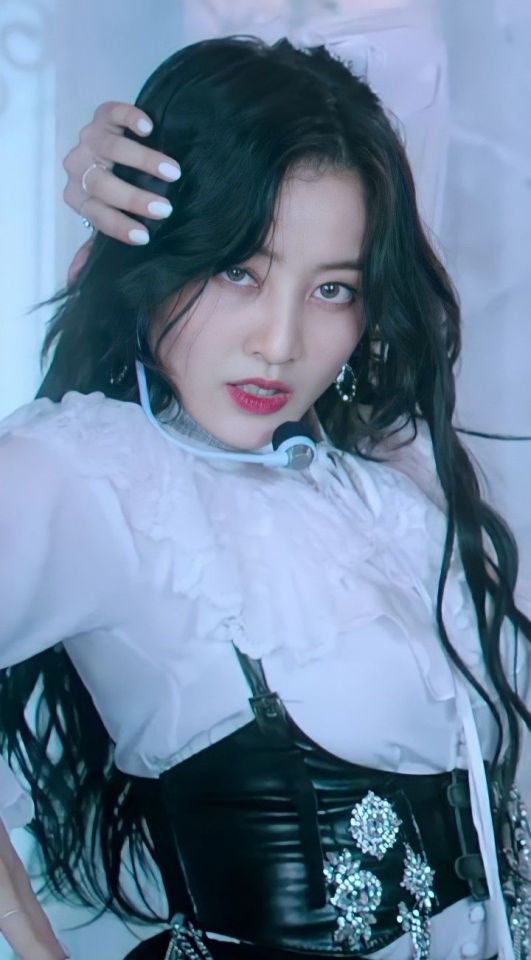

Didn't edit this so will have typos
#park jihyo#twice jihyo#kpop astrology#twice astrology#vedic astrology#astrologer#Chitra#Chitra Ascendant#shravana#shravana sun#Swati#Swati Moon#Mars Moon Rahu
19 notes
·
View notes
Text
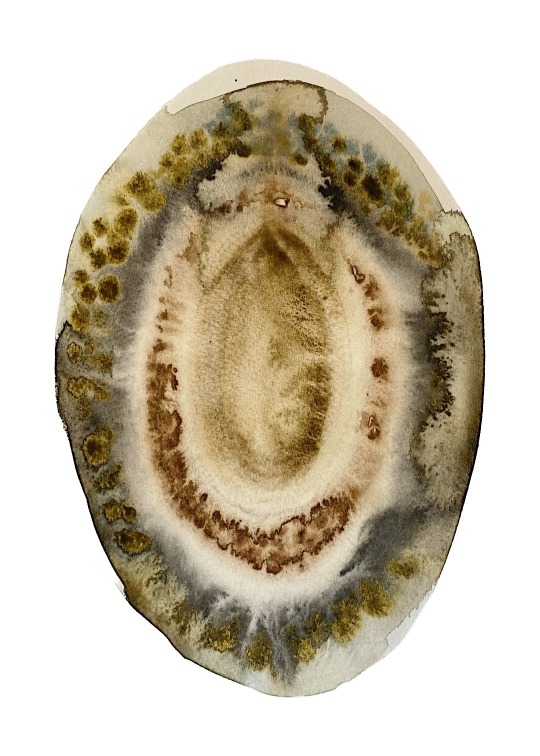
No.30 Eyes of The Earth Sacred Circle by Rose Eads
shop art
#artists on tumblr#art#spirituality#abstract art#fine art#my art#abstract painting#boho#earth art#earth#earthcore#moss#moss art#green art#circle art#green painting#painting#portal art#Crystal art#roots#lichen#amethyst#crystals#spirit#cloud art#river art#stream art
6 notes
·
View notes
Note
Hi! Your friendly neighborhood art historian lurker back again to weigh in on the (very interesting!) question about yonic art. I think that in yonic art, the yoni is a totem rather than an object. In the abstract, it is a symbol, while in more figurative depictions it is a portrait.
When you have a question about a piece of art like this, the best first question to ask yourself is: “is the focus of this painting/sculpture the object, or the subject?” It’s rare, in my opinion, for the vulva itself to be the object. Basically, a simpler way to say this: how would this piece fundamentally change if it wasn’t a nude, but a still life, done in exactly the same style? For most HW art: not much. For yonic art? All meaning is lost.
.
#headless women art#baby please come off anon and slide in my DMs I am obsessed with you#thank you so much for this commentary!
13 notes
·
View notes
Text

Lardo: You want me...........to paint.....a [REDACTED]? For your hotel?
Client: Yes. Are you interested?
Lardo: Ch'yeah, I am—I mean. Yes. I'd love to fulfill this commission for you.
Lardo, internally: lmaoooooo
For @omgzineplease #1: After College
→ Based on this Ask-A-Wellie
Posting just in time for @omgcheckplease ep.1's ep.2's 10th anniversary! 🎉🥳🎉
Look at my girl go, dongling up a wall dongle for actual money and work experience 🥹
🥧🏒 Don't forget to check out the first issue of Zine, Please! 🏒🥧
Lardo's not an amateur by the way—she knows how to use references and plan her artwork!! Her art major was not for naught!!
(Details under the cut!)

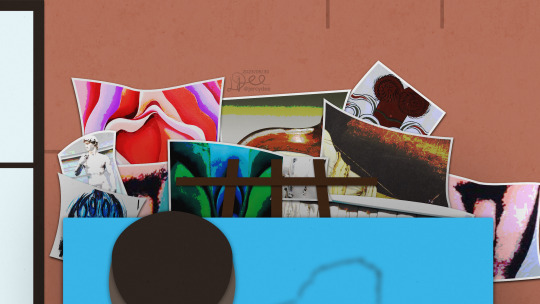

Featuring the following artworks:
Judith Bernstein, Dick in a Head, 2014
Salvador Dali, Anthropomorphic Bread, 1932
Marcel Duchamp, Dart Object, 1962
Yayoi Kusama, Leftover Snow in the Dream, 1982
Jamie McCartney, 10 Women Horizontal, 2021
Michelangelo, David, 1504
Georgia O’Keeffe, Blue Flower, 1918
Andy Warhol, Penis, 1977
Phallus Paintings In Bhutan (from Wikipedia)
Yoni Artwork, Female Flower, 2022
Look up the full pieces at your own discretion—dongs and vulvas ahead LOL ( ͡° ͜ʖ ͡°)
(All artwork images and textures used belong to their respective owners, no infringement intended. Any mistakes and inaccuracies are mine.)
🥧🏒 Check out #AfterCollege! 🏒🥧
#larissa duan#lardo#lardo duan#omgcp lardo#omgcp#omgcheckplease#check please#omg zine please#artists on tumblr#jercy attempts art#digital art#digital illustration#illustration#fanart#.jesus idr how to tag actual artwork on this 'art' blog anymore lmfao#.also i always meant to post this on ep.1's anniversary but bc the zine got pushed back (bc of me) this also got pushed back—whoops /o\#.anyway can y'all tell i'm a giant art history nerd LOLLL
22 notes
·
View notes
